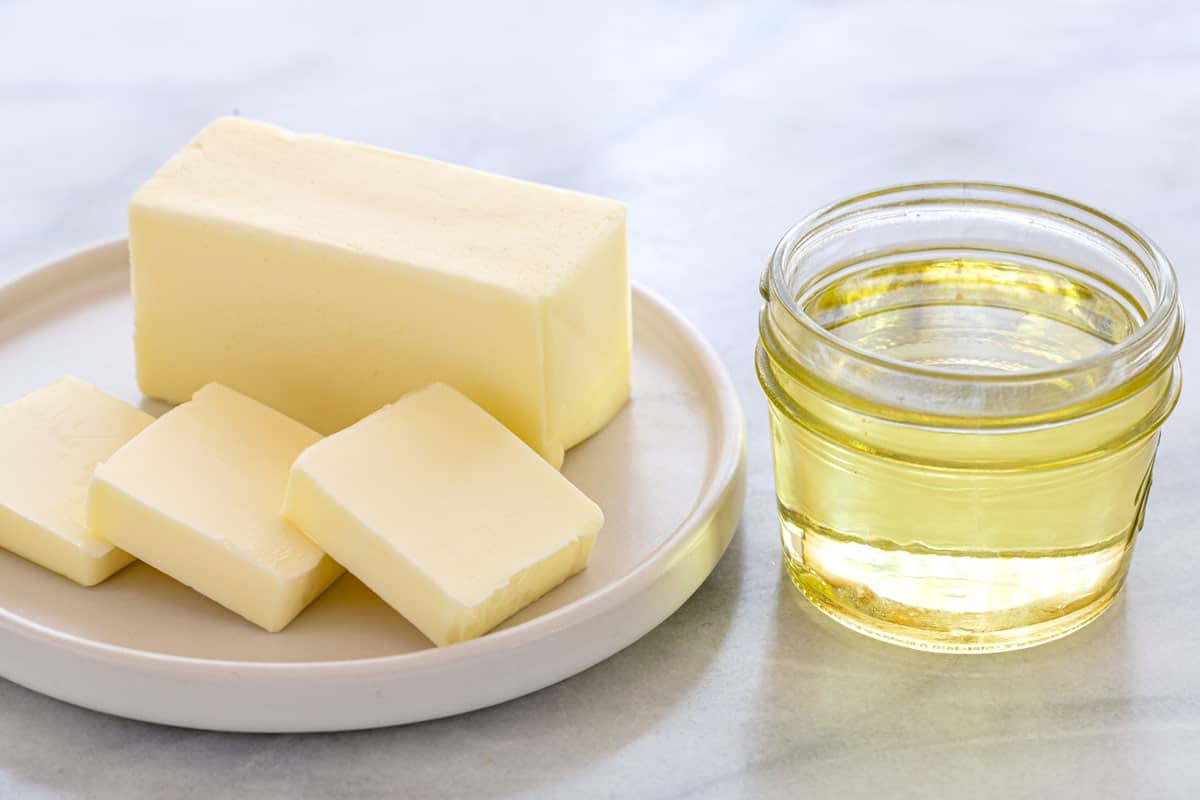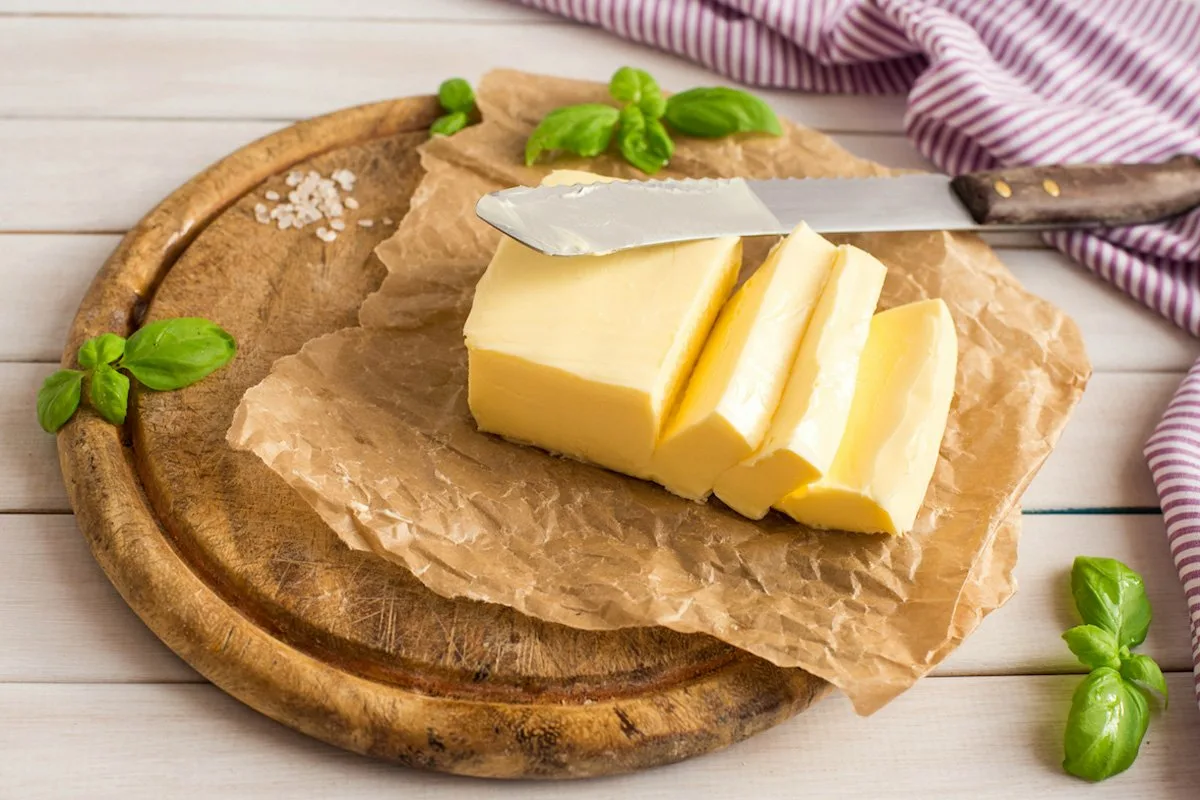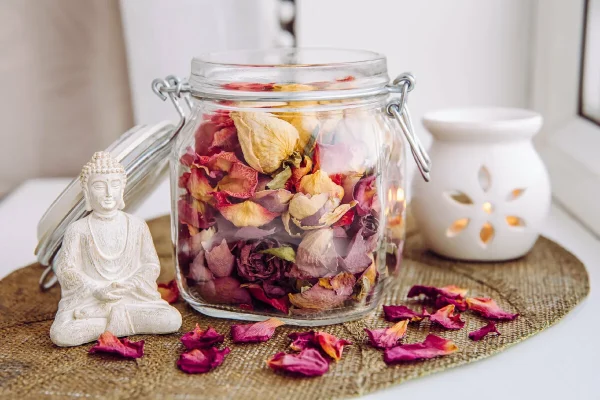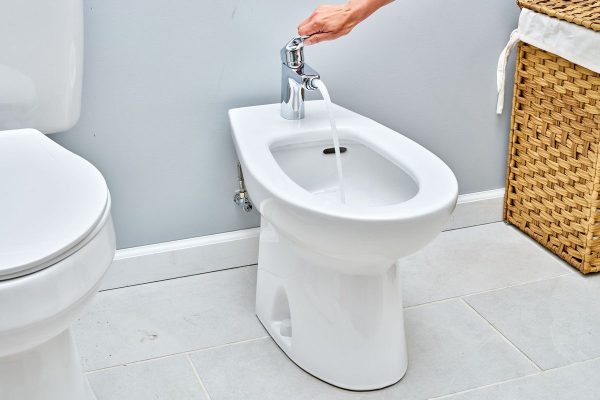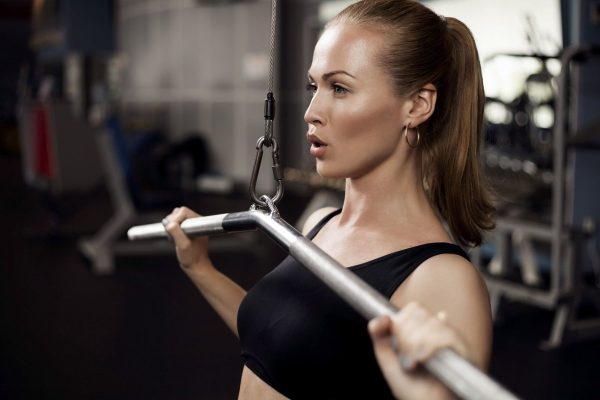Learn all about these two options that will greatly change your food.
When it comes to cooking, the same question always comes up: should you use vegetable oil or lard? The answer is not as simple as it seems and depends on several factors, from the type of recipe to health concerns.
Both are sources of fat and can transform the flavour of any dish, but they have key differences that are worth knowing before you decide.
Butter: classic flavour and versatility in the kitchen
Butter is the traditional choice for giving a homely and creamy touch to dishes. It is firm when cold, but melts quickly when heated and reaches cooking temperature in a short time. Its smoke point is lower (around 180 °C), so it does not withstand frying over high heat very well and can release harmful compounds if overheated.
Nutritionally, it provides saturated, monounsaturated and polyunsaturated fats, as well as vitamin A, B vitamins and oleic acid, which helps improve cholesterol levels. Another plus: it is low in sodium, making it suitable for those who need to control their blood pressure.
Vegetable oil: more stable for frying and with a better fat profile
Cooking oil, especially soybean oil, is plant-based and has the great advantage of a higher smoke point (over 200 °C). This makes it an ideal choice for frying at high temperatures without burning or releasing toxins.
It has a lower proportion of saturated fats than butter and a higher content of unsaturated fats, which are beneficial for cardiovascular health. However, it is not all positive: soybean oil is usually highly refined and, in excess, is associated with obesity, diabetes and heart disease.
Oil or butter? Which is better for baking?
Butter in the oven
- Ideal for pastries and baked goods: cakes, puddings, biscuits and breads made with butter are tastier, moister and have a better texture thanks to its ability to add creaminess and softness to dough.
- Adds flavour: enhances taste, especially in doughs and gratins.
- Limitation: cannot withstand very high temperatures for long periods of time because it has a lower smoke point (180 °C). Even so, most oven preparations are between 160 and 200 °C, so it works well.
Vegetable oil in the oven
- Versatile and lighter: it is better for sautéing vegetables before baking, preparing oven-baked or roasted meats because it withstands heat better and does not burn as easily.
- Less saturated fat: it provides a healthier fat profile than butter, especially olive oil or high oleic sunflower oil.
- Different texture: it does not achieve the same moisture and fluffiness in cakes or biscuits as butter, but it is excellent for adding crunch to vegetables and potatoes.
Which is healthier?
Although many people overlook it, butter may be less harmful than soybean oil because it is a less processed product and contains compounds that promote heart health. It is also lower in calories: one tablespoon provides about 74 calories, compared to 130 for oil.
However, if you are going to fry at high temperatures, vegetable oil is safer. Lard works best in stir-fries, quick cooking and baking recipes, where it adds unique flavour and texture.

